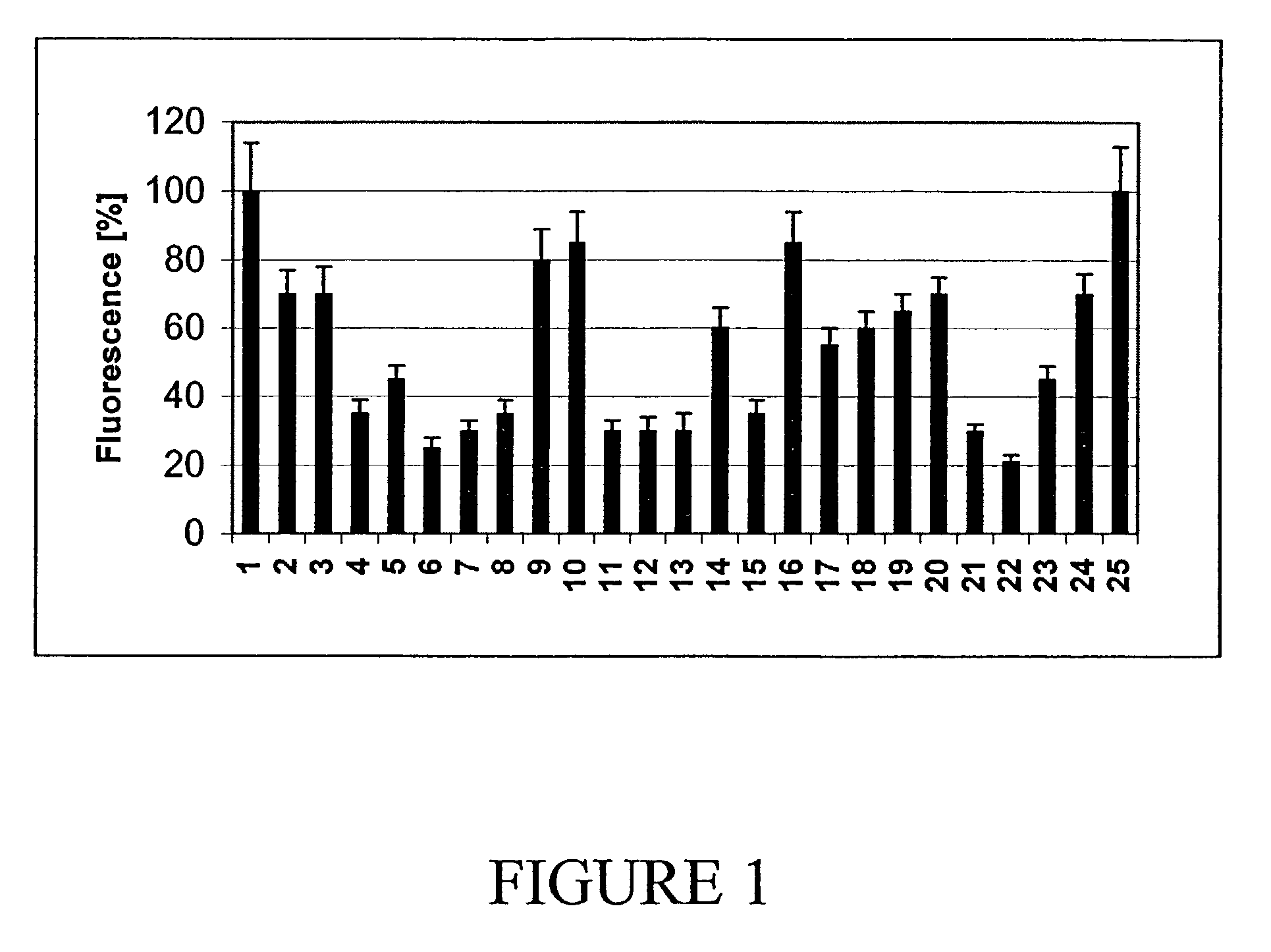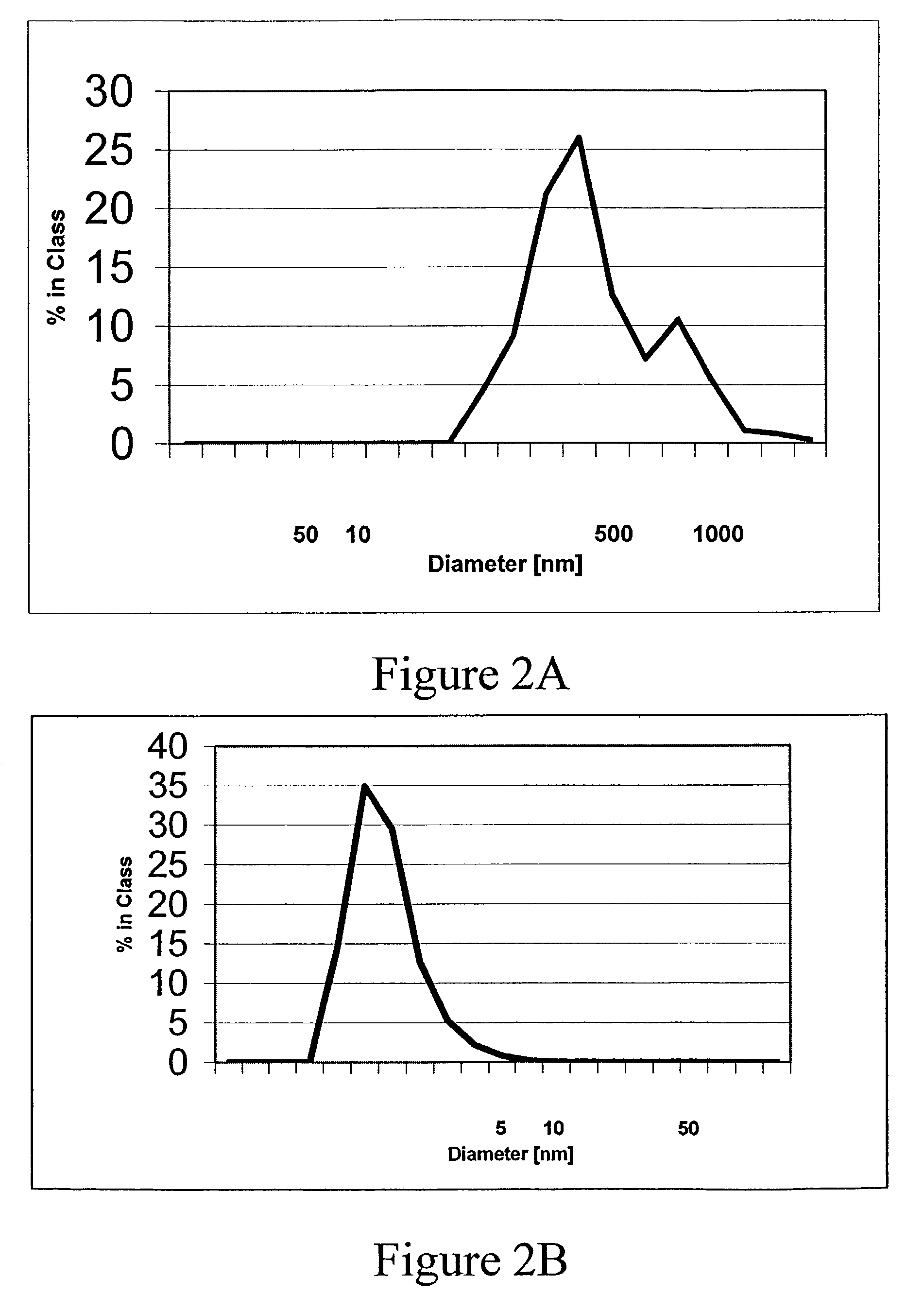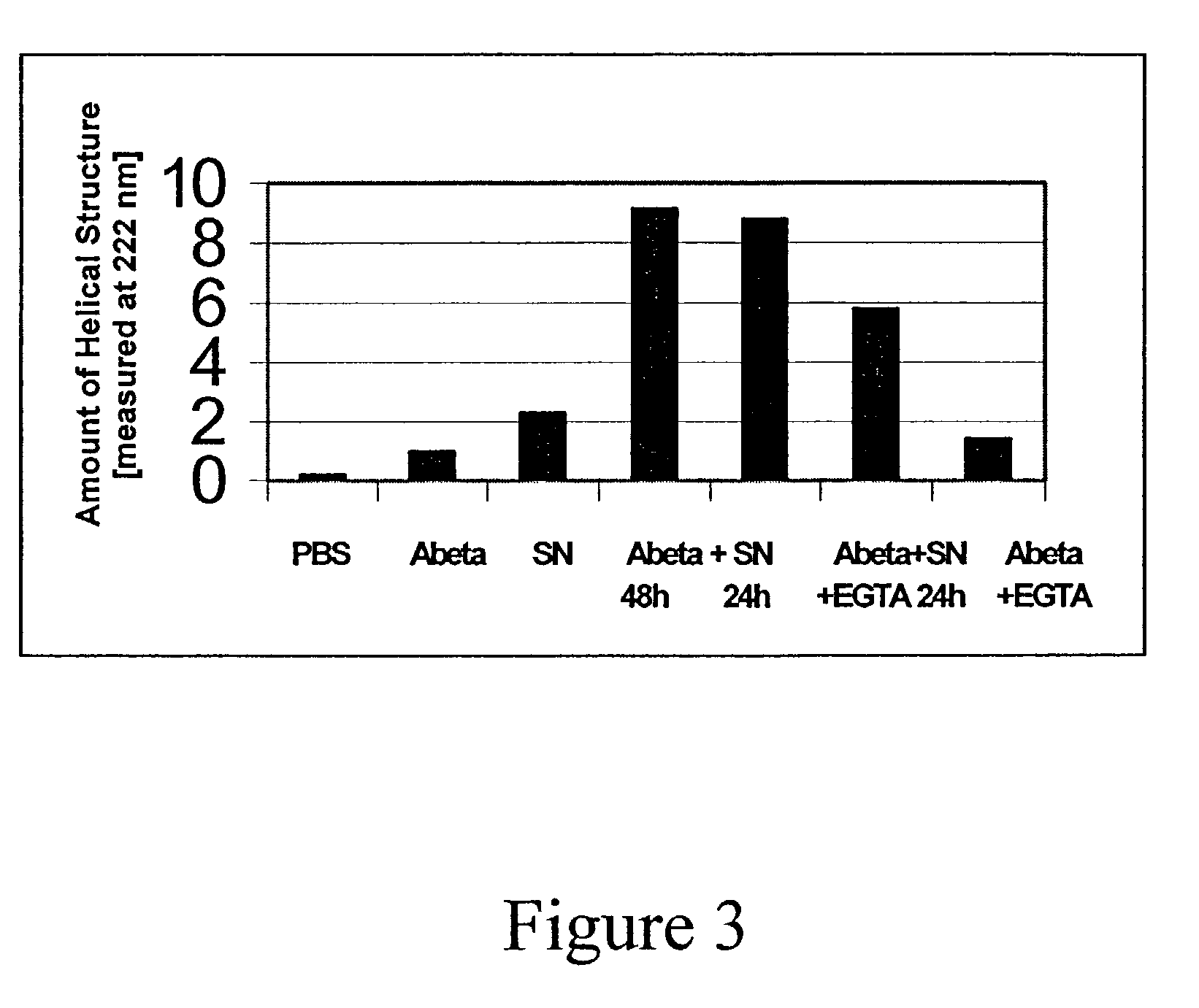Methods and compositions of monoclonal antibodies specific for beta-amyloid proteins
a technology of monoclonal antibodies and beta-amyloid proteins, applied in the field of compositions and compositions of monoclonal antibodies to beta-amyloid proteins, can solve the problems of difficult diagnosis of alzheimer's disease before death, difficult to develop drug therapies, or to treat, and methods for diagnosing ad have not been proven to detect ad in all patients. , to achieve the effect of reducing apoptotic cell death, reducing apoptoti
- Summary
- Abstract
- Description
- Claims
- Application Information
AI Technical Summary
Benefits of technology
Problems solved by technology
Method used
Image
Examples
example 1
Preparation of Aβ1-16 Antigen
[0078]A first step in making an antigenic component comprises synthesis of tetrapalmitoyl-tetrakis-lysine-Aβ1-16-peptide. Two sequential ε-palmitoylated lysines were introduced at the peptide's C-terminus. The first ε-palmitoylated lysine was anchored onto the 4-alkoxylbenzyl alcohol resin by reacting 335 mg of resin with 388 mg of FmocLys(Pal)OH in the presence of DCC (185 mg) and DMAP (20 mg) in dry, freshly distilled dichloromethane according to Merrifield Lu, G., Mojsov, S., Tam, J. P. & Merrified, R. B. (1981) J. Org. Chem. 46, 3433–3436.
[0079]After stirring for three hours at room temperature, the reaction mixture was filtered and thoroughly washed ten times with dry methylene chloride. In order to ensure a complete reaction, the obtained resin was reacted a second time with a fresh portion of FmocLys(Pal)OH, in the presence of DCC and DMAP in dry methylene chloride. The resin was then suspended in 45 ml dry methylene chloride and 5 ml acetic anhyd...
example 2
Preparation of Monoclonal Antibodies to Aβ1-16
[0083]Using tetrapalmitoyl-tetrakis-lysine-Aβ1-16 reconstituted in liposomes with lipid A as an antigen, as made above in Example 1, C57B1 / 6 mice were inoculated i.p. The mice received 5 immunizations over a period of 10 weeks and anti-amyloid antibodies of 1:5000–1:10,000 were measured by ELISA at the end of this interval. See Schenk et al., Nature (London) 400, 173–177 (1999).
[0084]The mice were tested using the ELISA described below for reaction to synthetic Aβ1-42 fibers. Synthetic, human Aβ1-42 sequence was incubated for seven days in PBS at pH=7.3. This resulted in the formation of fibers, which bind Thioflavin-T, a fluorescent dye emitting at 482 nm.
[0085]To perform the ELISA, microtiter plates were coated with 50 μl of Aβ1-42 solution (1 mg Aβ1-42 / 5 ml PBS) and left overnight at 4° C. Wells were blocked with 200 μl BSA / PBS (0.5% BSA) for two hours at 37° C. and washed with 200 μl of PBS / 0.005% Triton X-100. Dilutions of sera (1:...
example 3
Measurement of Binding to Aβ1-42
[0090]ELISAs were performed with supernatants of hybridomas from three selected populations (AN-15E6, AN6D4 and AN9C2). The supernatants from these populations showed a significant binding to Aβ1-42 in the assay, and the capability of solubilizing Aβ1-42 fibers in vitro. Subclones were obtained and tested for specific antibodies in an ELISA. The ELISA values of the supernatants of these clones at OD405 are listed in Table 1.
[0091]
TABLE 1ELISA Response of the Supernatants of Hybridoma SubclonesELISANo.Clone Name[OD405] 2AN-15E6-A90.117 3AN-15E6-B90.118 4AN-15E6-C80.159 5AN-15E6-C90.128 6AN-15E6-E80.112 7AN-6D4-C1*0.339 8AN-6D4-C30.298 9AN-6D4-D20.39210AN-6D4-D10.37311AN-6D4-D30.24112AN-6D4-D60.36513AN-6D4-E10.18214AN-6D4-E20.19415AN-6D4-E30.38616AN-6D4-F10.36617AN-6D4-F20.37518AN-6D4-F40.37319AN-9C2C4-E60.14320AN-9C2C4-G60.36521AN-9C2C4-G70.222AN-9C2C3-C110.16623AN-9C2C3-E40.10124AN-9C2C3-G40.168ControlsDMEM / 10% FCS0.124DMEM / 10% FCS / 2% HCF0.113serum f...
PUM
| Property | Measurement | Unit |
|---|---|---|
| pH | aaaaa | aaaaa |
| concentration | aaaaa | aaaaa |
| concentration | aaaaa | aaaaa |
Abstract
Description
Claims
Application Information
 Login to View More
Login to View More - R&D
- Intellectual Property
- Life Sciences
- Materials
- Tech Scout
- Unparalleled Data Quality
- Higher Quality Content
- 60% Fewer Hallucinations
Browse by: Latest US Patents, China's latest patents, Technical Efficacy Thesaurus, Application Domain, Technology Topic, Popular Technical Reports.
© 2025 PatSnap. All rights reserved.Legal|Privacy policy|Modern Slavery Act Transparency Statement|Sitemap|About US| Contact US: help@patsnap.com



